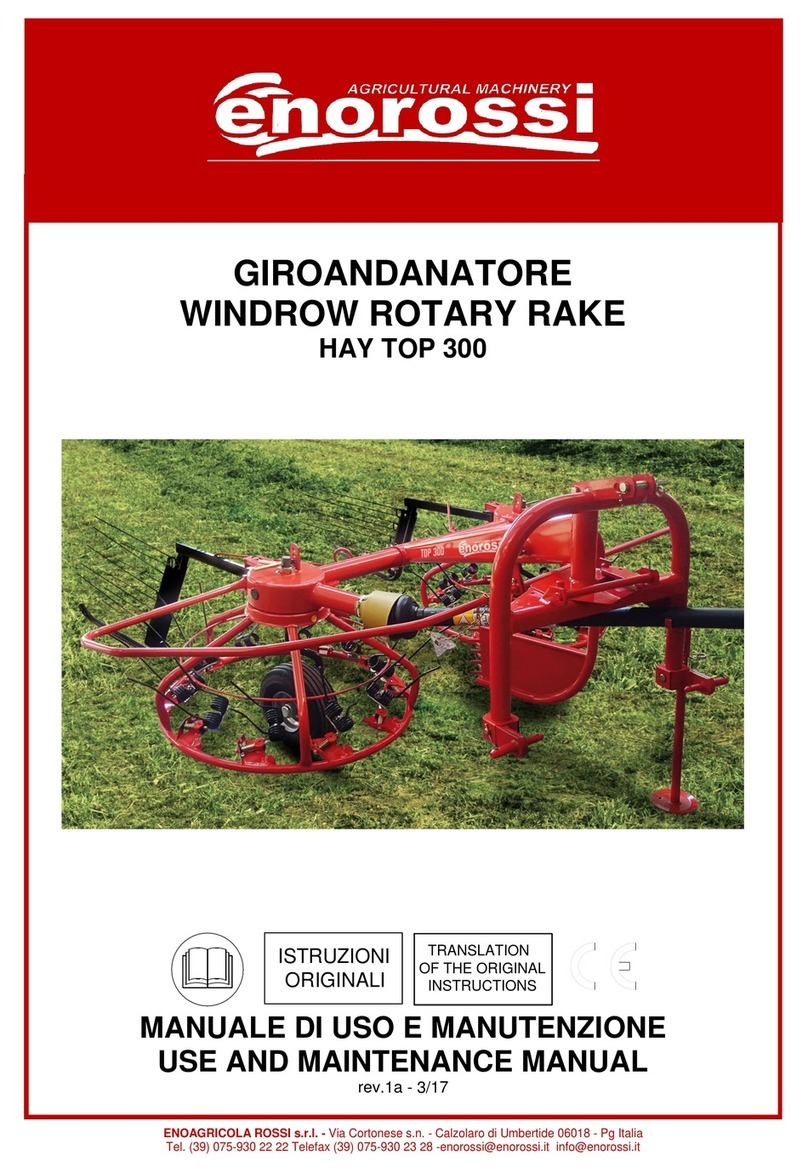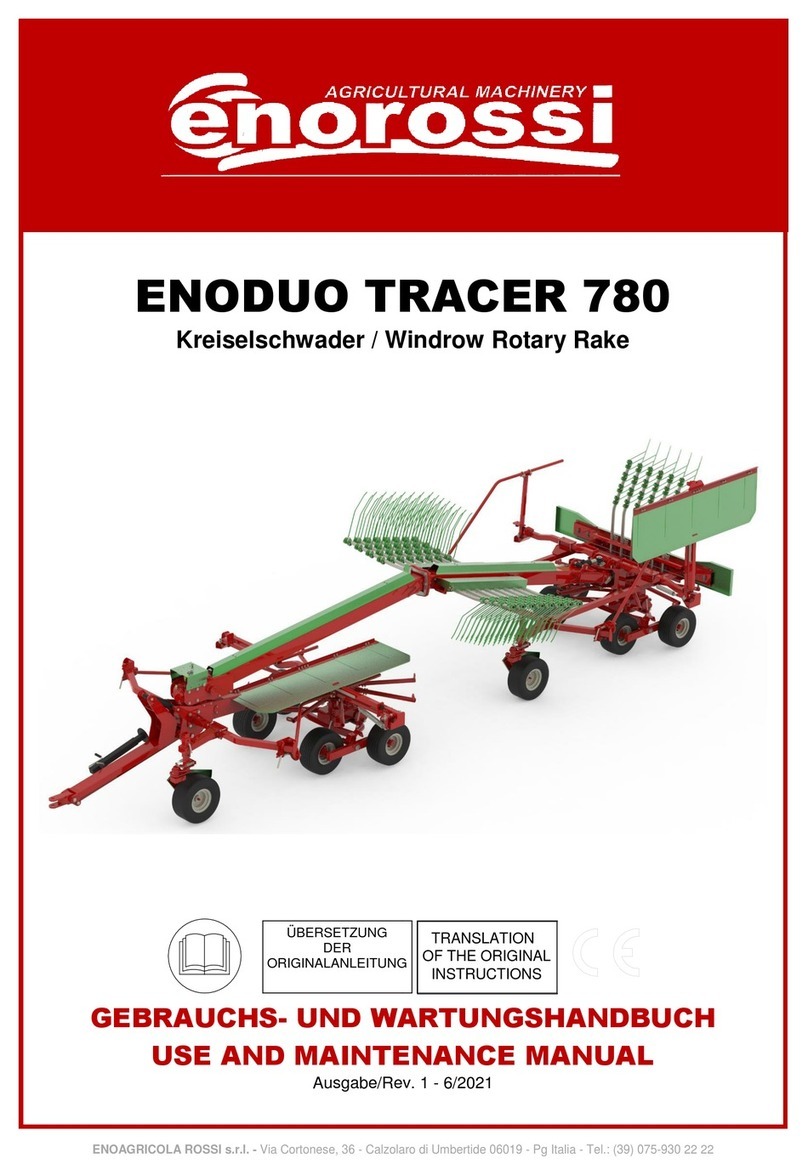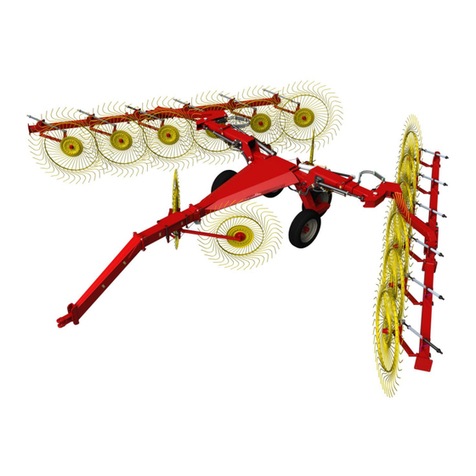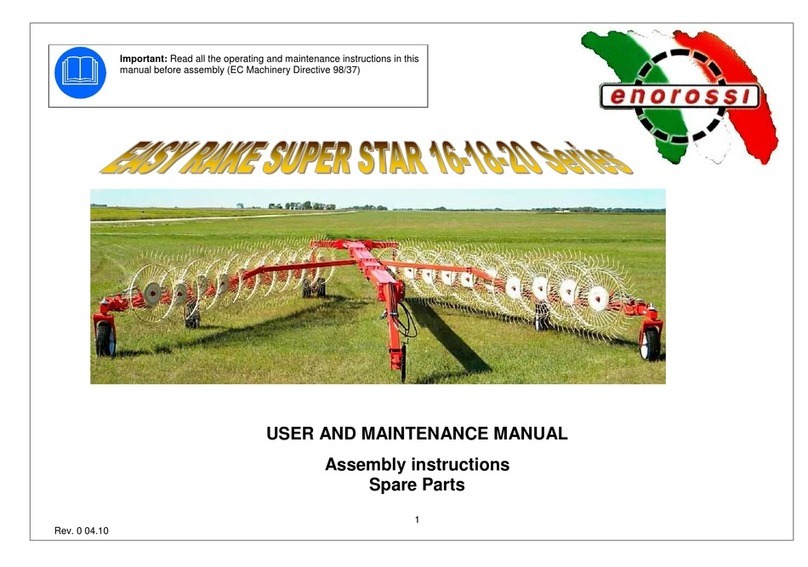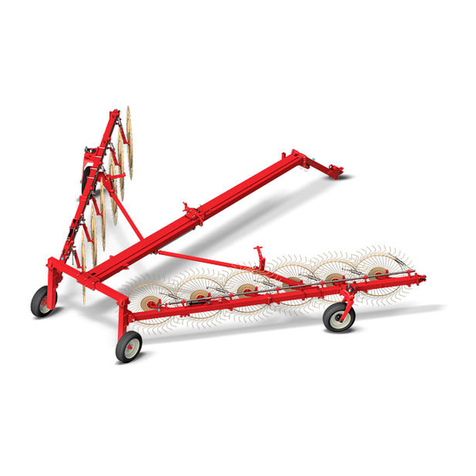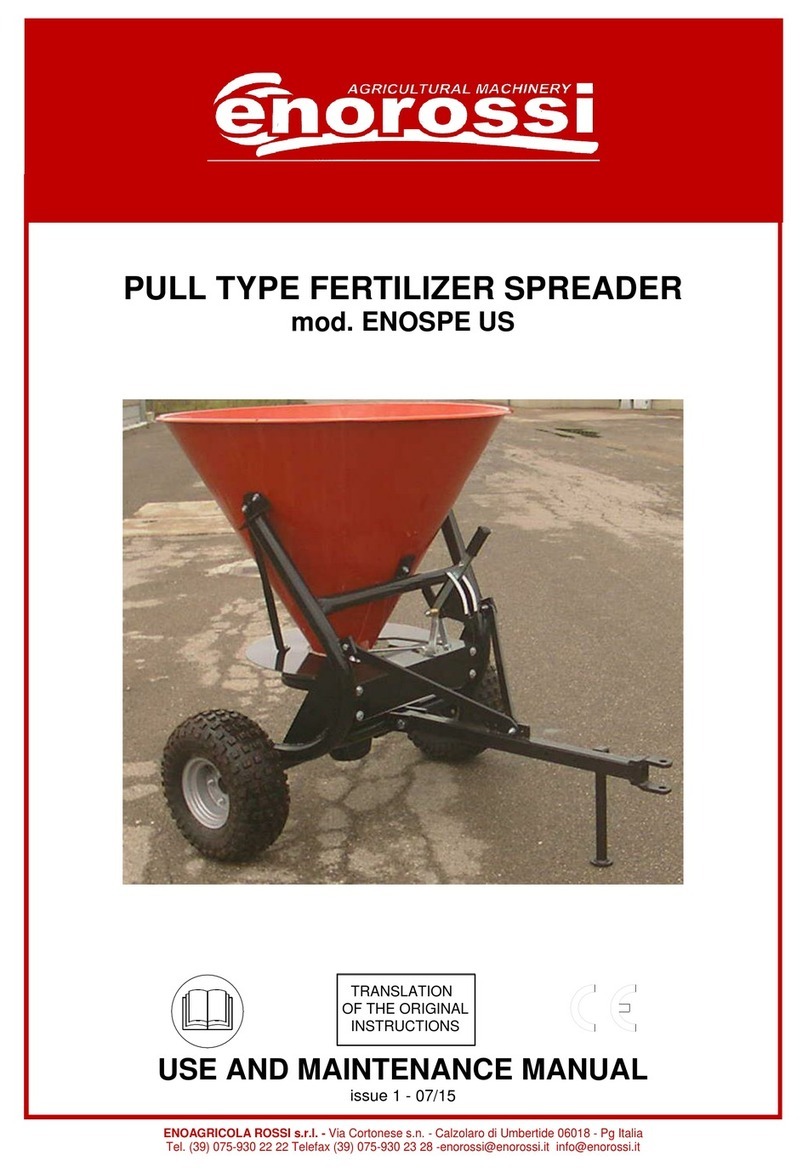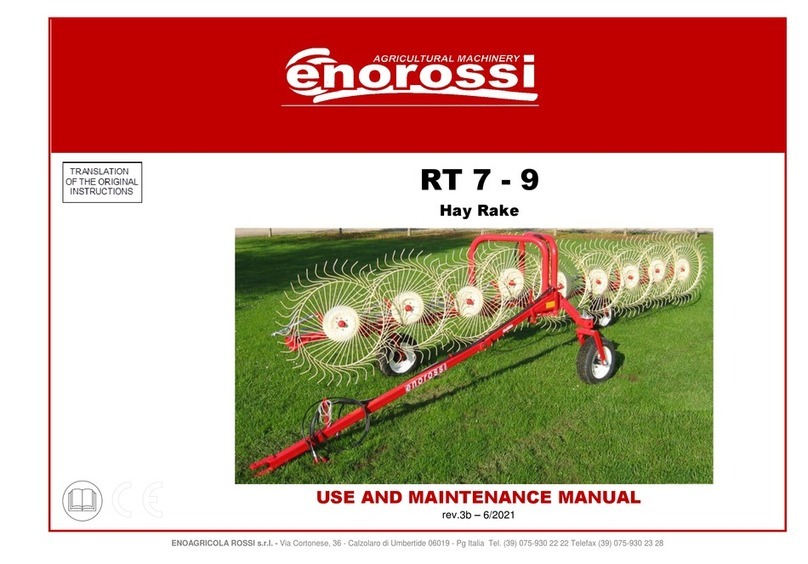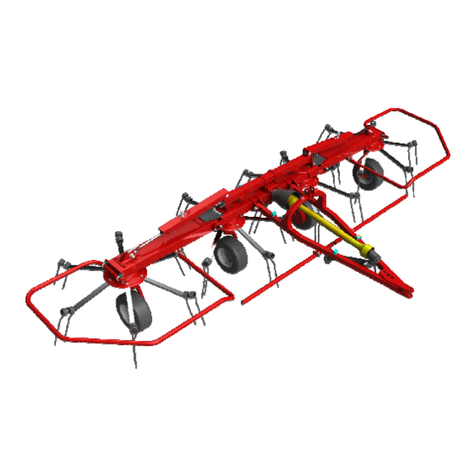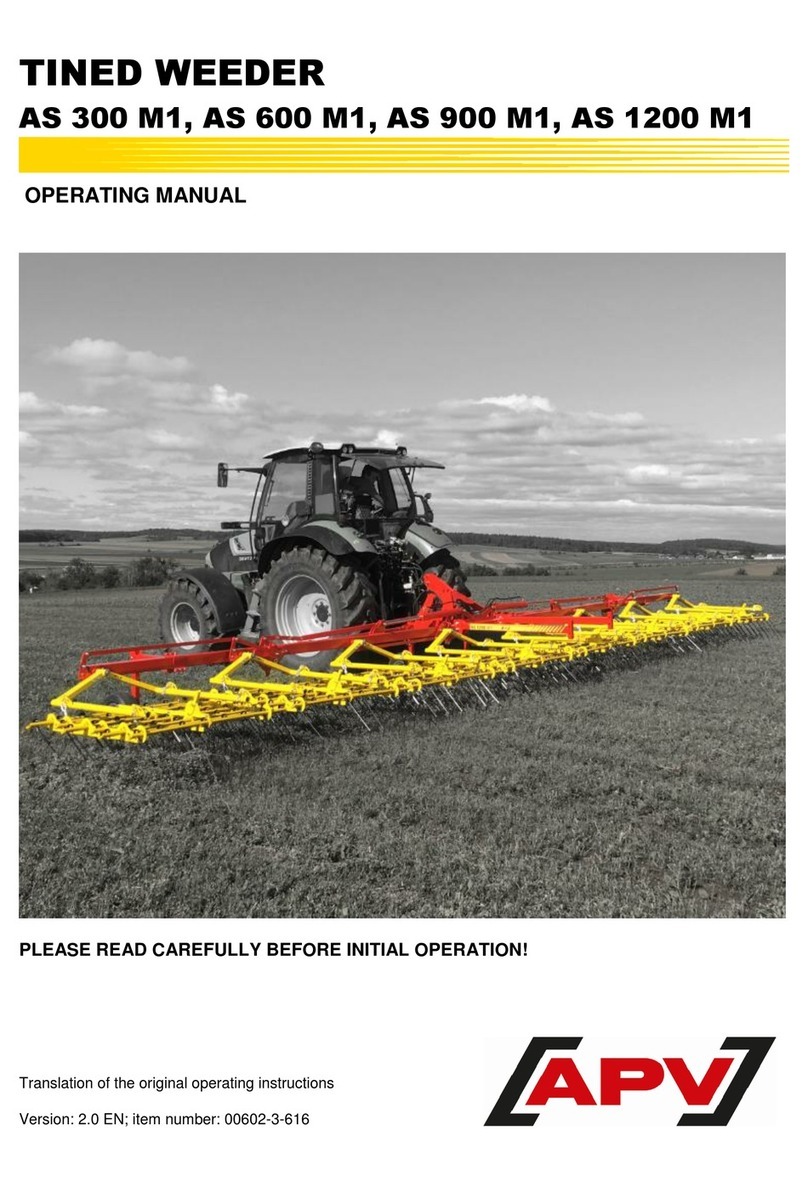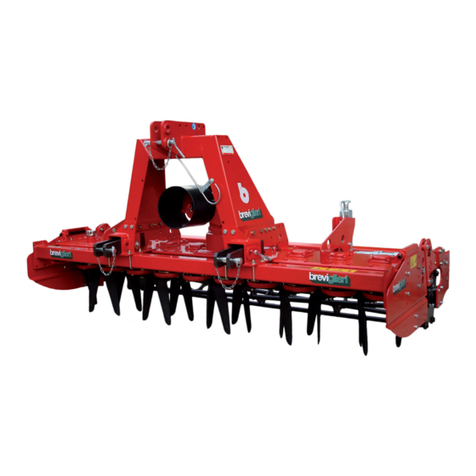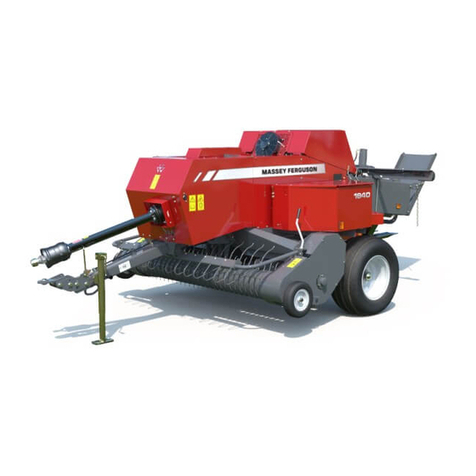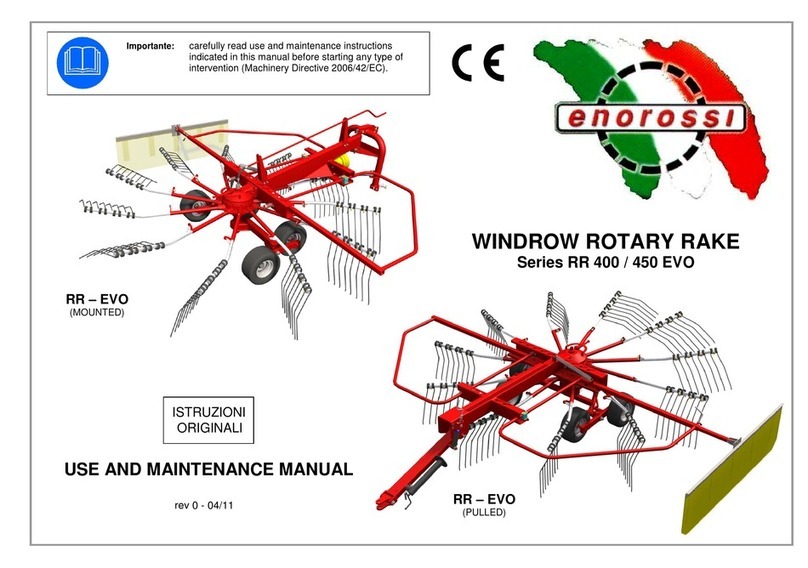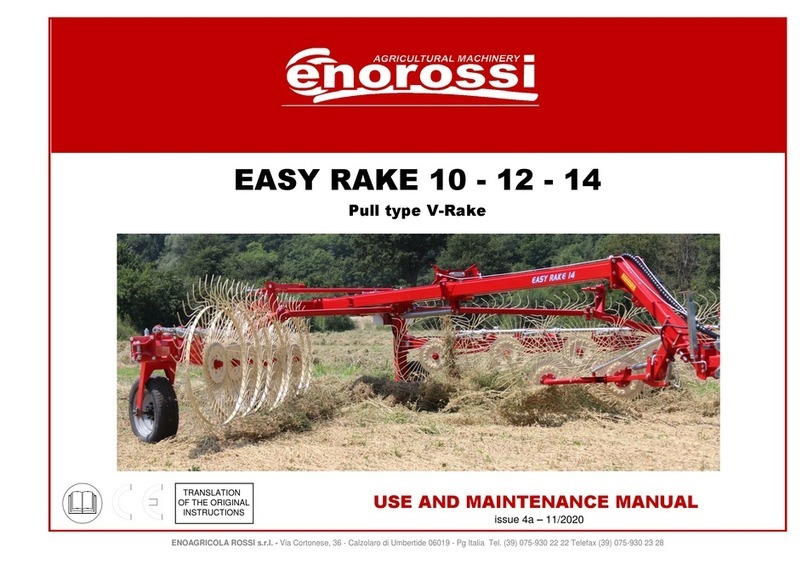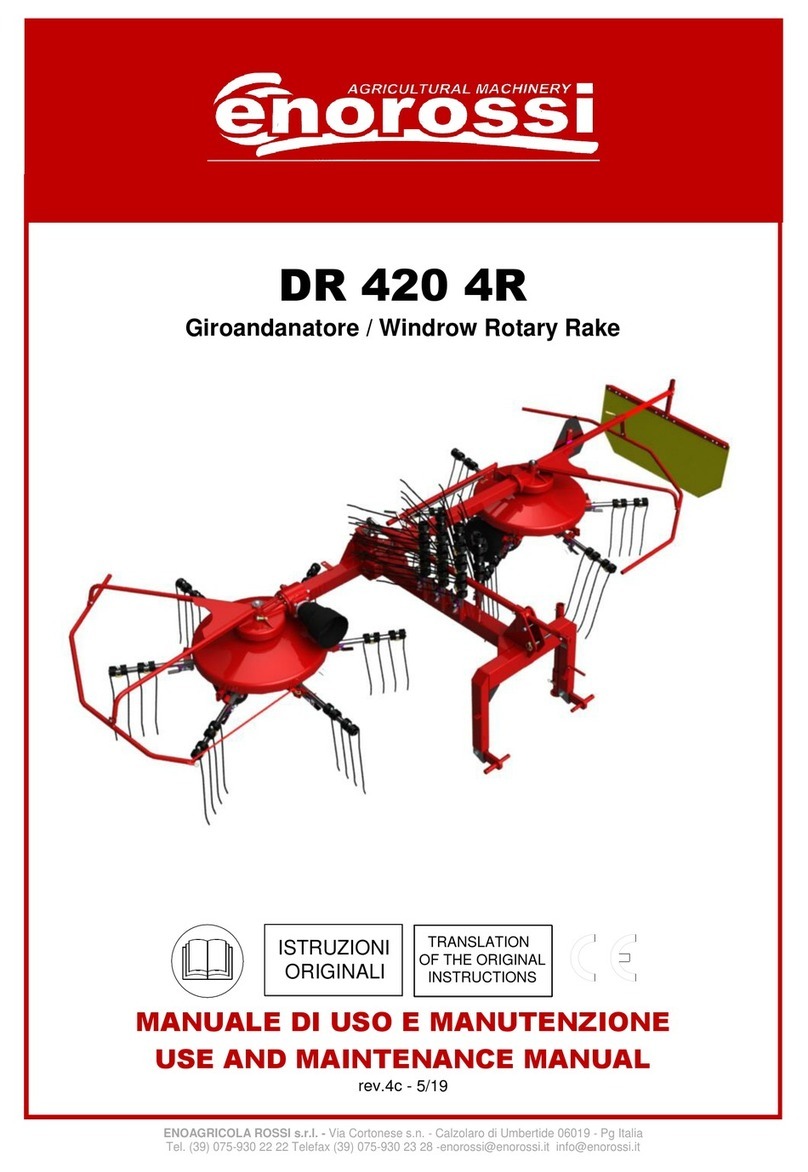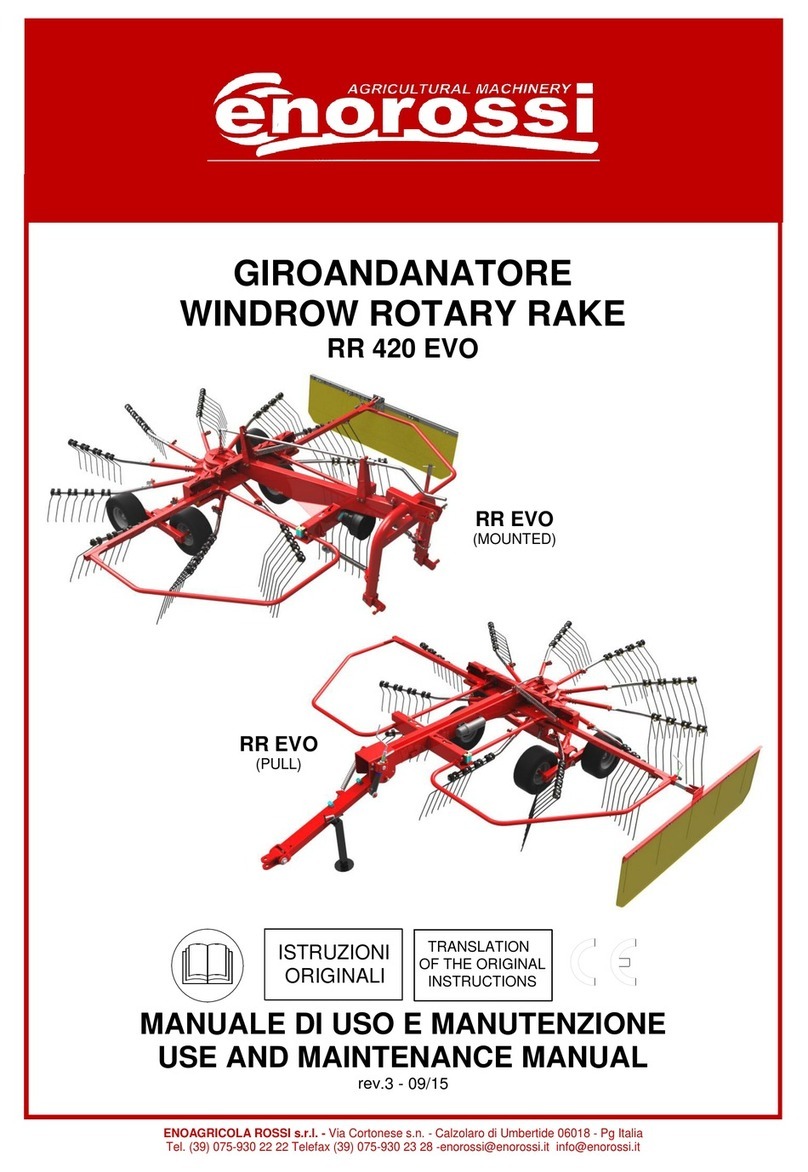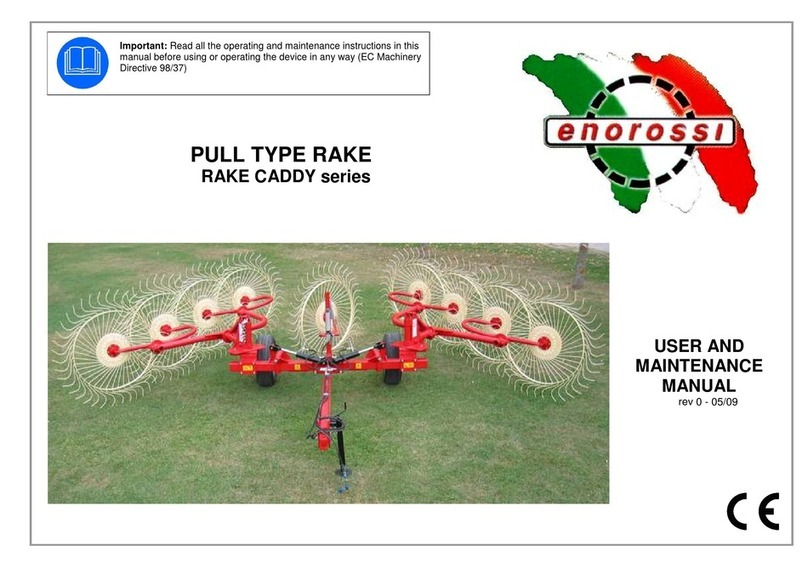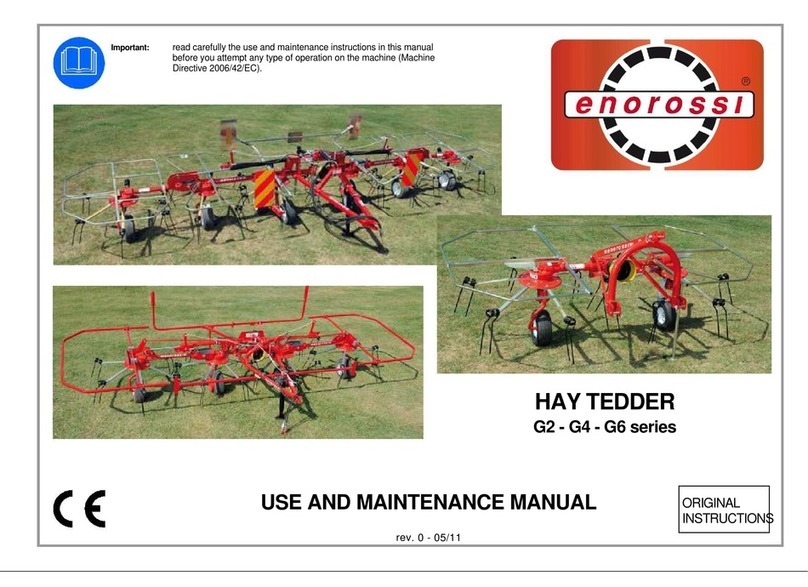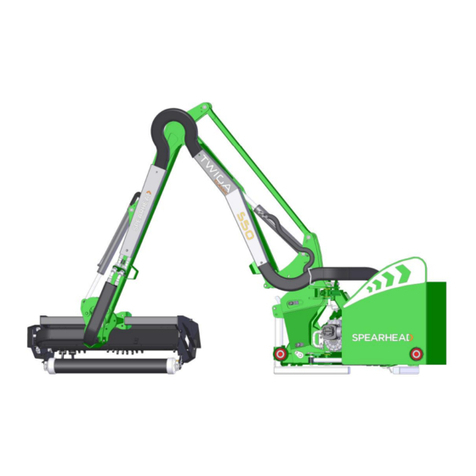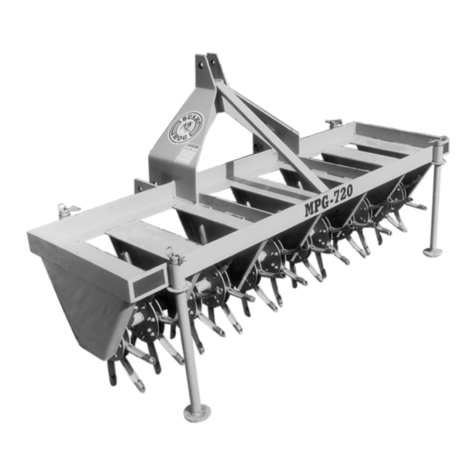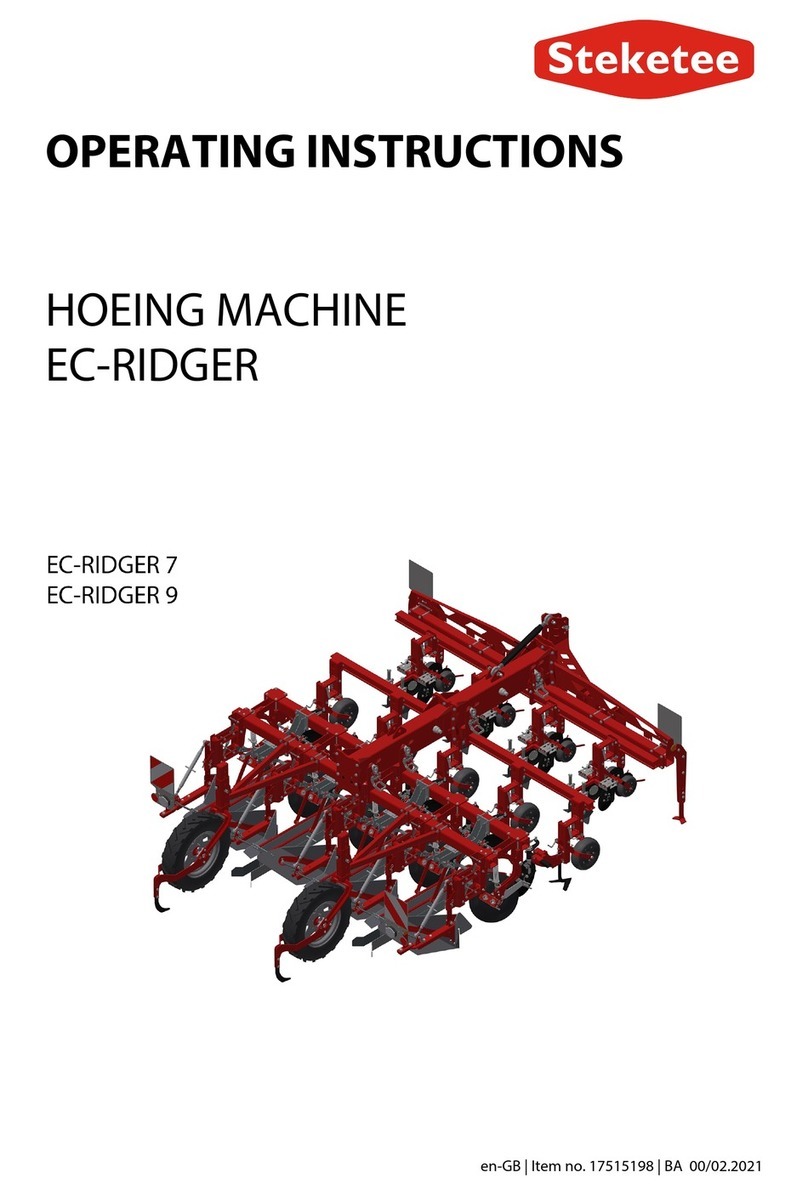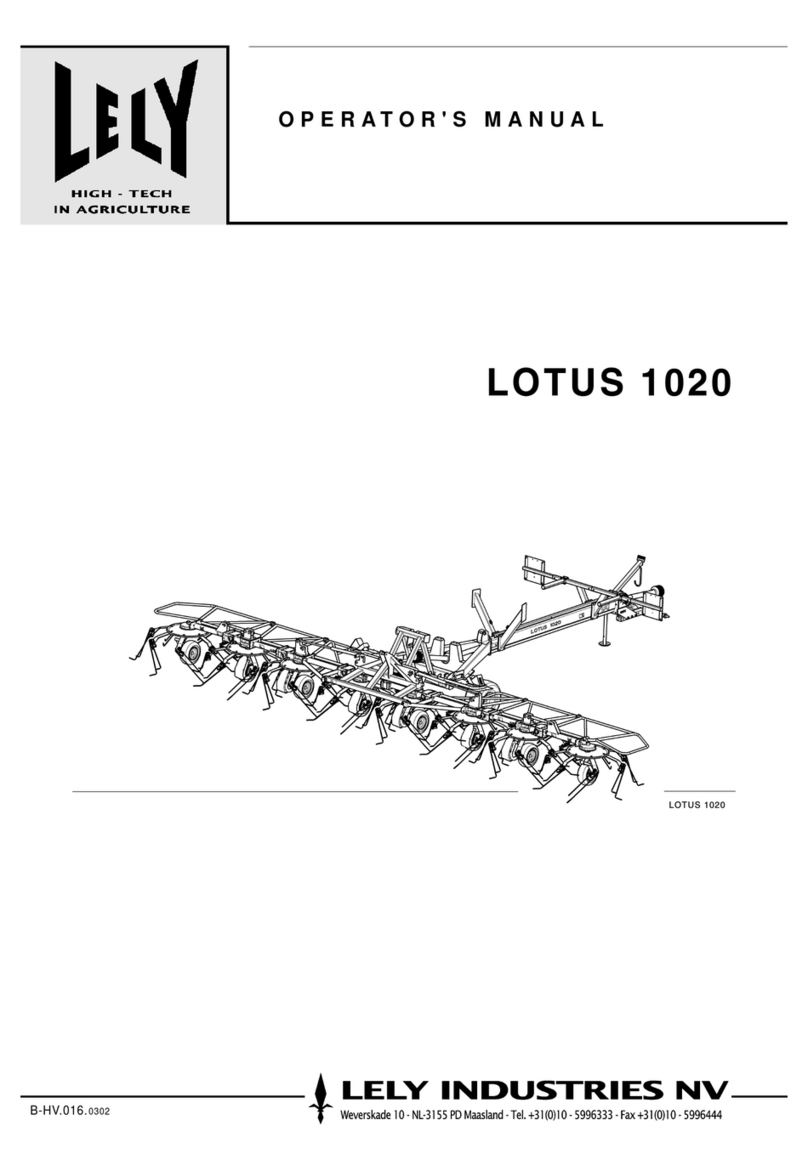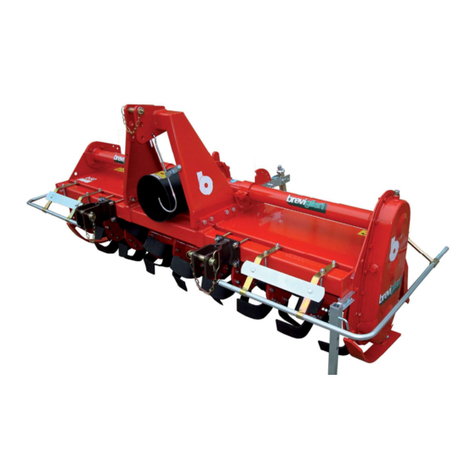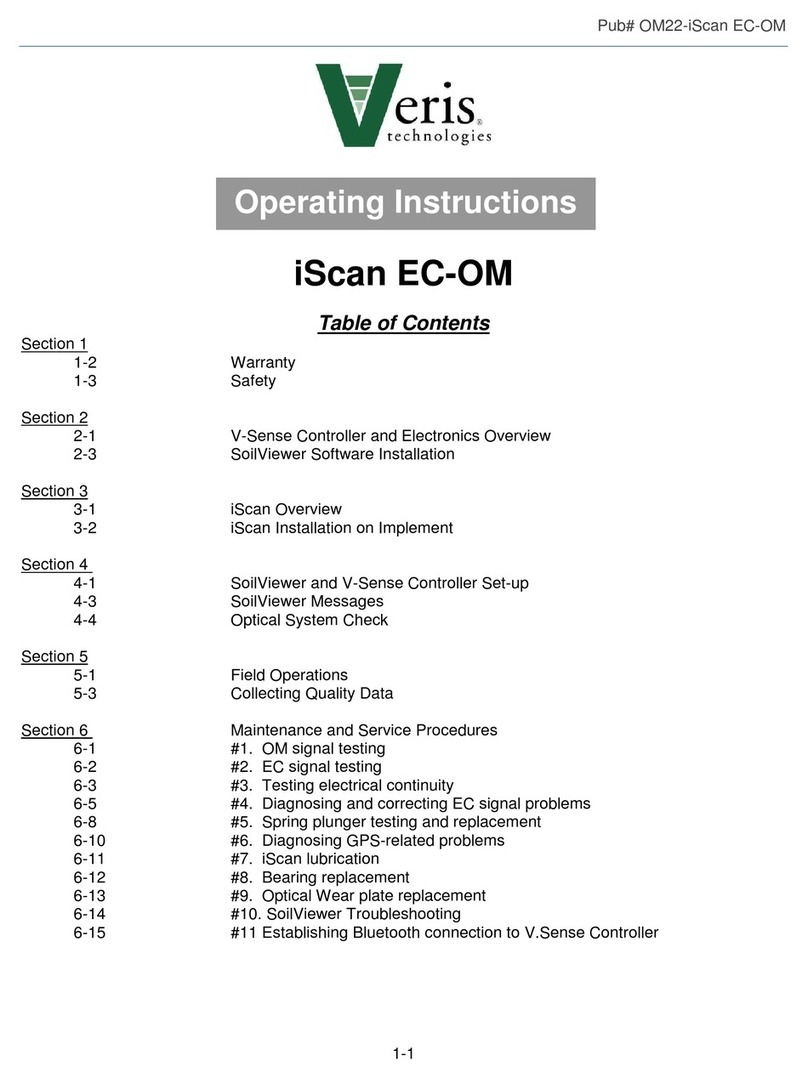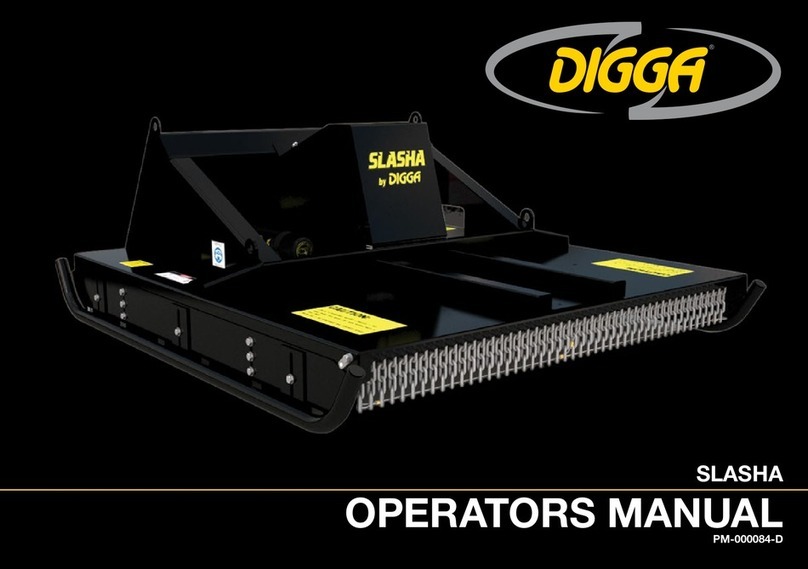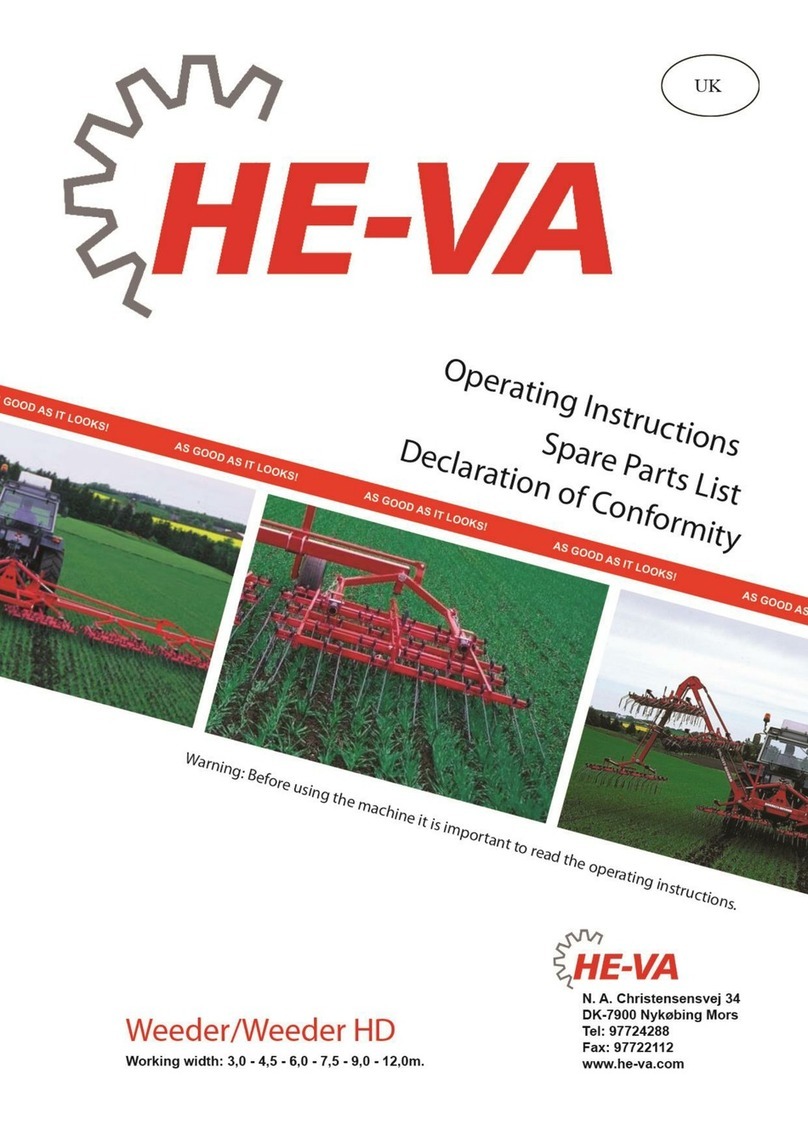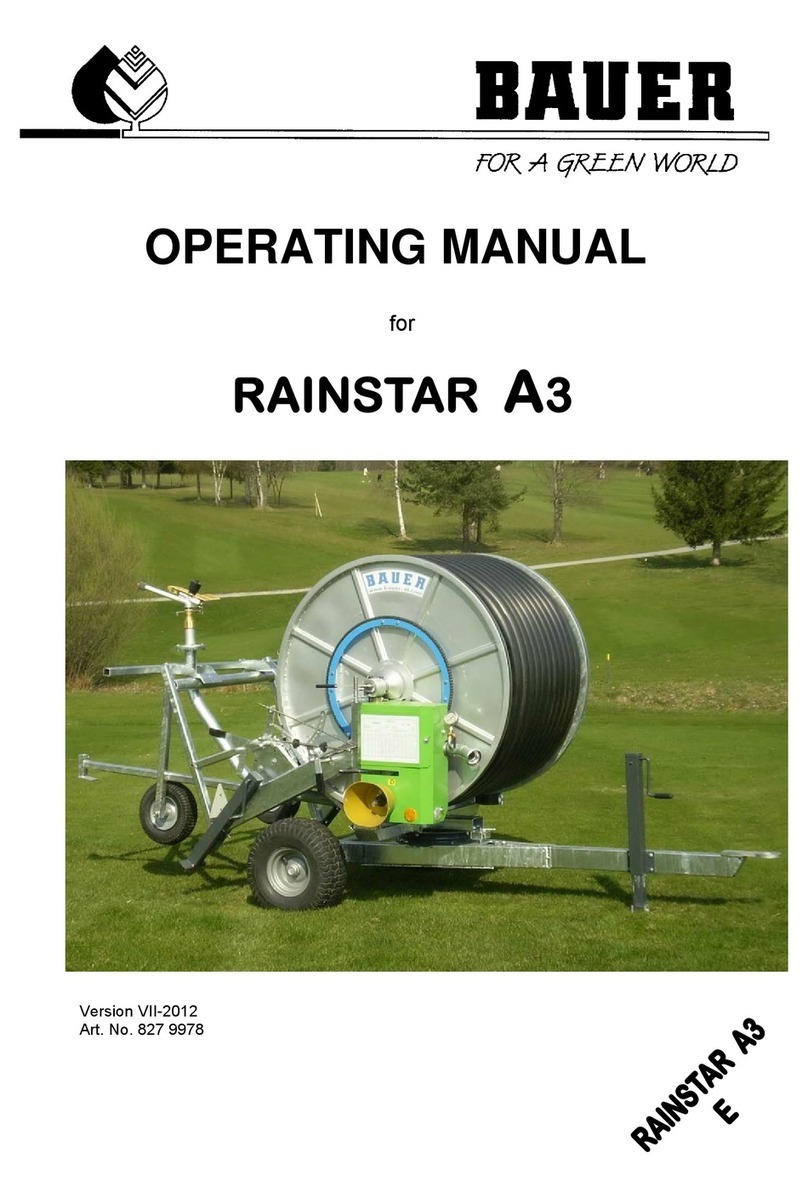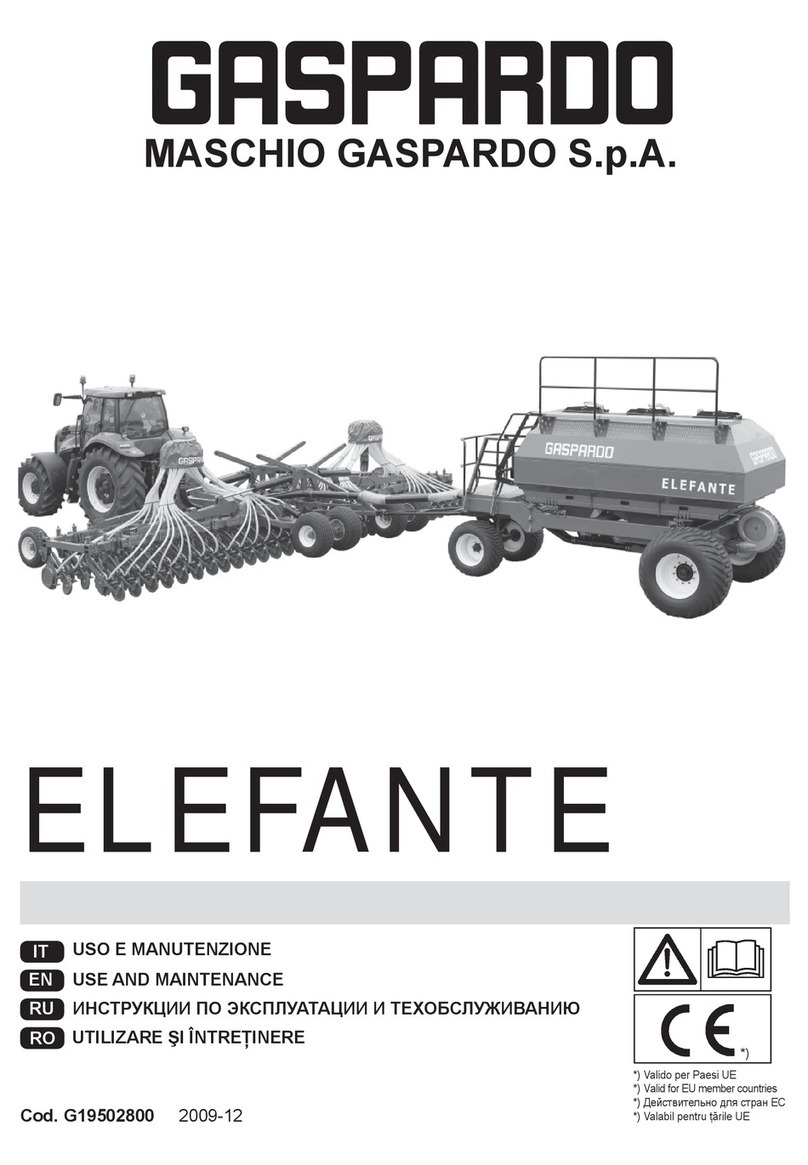
16
- rotary hay rake operations are allowed in good
visibility conditions. In the event that these
conditions were absent, even partially,
operations should be interrupted since even the
normal safety conditions are absent. The
operations can be resumed only if good
visibility conditions are restored.
Precautions when using:
-during operations, always maintain the tractor
speed within 12 km/h. Note: such speed can be
decreased depending to soil conditions and/or to
ones of product to harvest;
-the operator must never abandon the tractor
leaving its engine on. Even for short working
breaks, they must always disengage the PTO,
switch off the tractor engine, engage the parking
brake and remove the key from the dashboard;
-during work breaks, the operator must not allow
unauthorized and/or unqualified personnel to
replace him;
-before reversing with the tractor or for direction
changes at the end of the field, the operator must
necessarily place the equipment in transport
configuration (see previously paragraph), with
the lifting of both rotating rake groups. The
equipment could be seriously damaged if the
groups were not lifted;
-the rotary hay rake operation does not produce a
noise level that allows the use of hearing
protection (plugs, headphones, etc..), however
the tractor could produce it. Consult the tractor
use and maintenance manual;
-the vibrations that the equipment may produce
and transmit to the operator are of low intensity
and the frequency is below human tolerability
levels. However, it is good always to keep the
transmission well lubricated.
Immediately interrupt work operations if:
-you are in proximity of resistant objects, such as
manholes, wells, trees, etc. since contact could
break the tines, and projected the pieces all
around at high speed;
-noisy vibrations coming from the equipment are
heared. To avoid possible damages, the operator
should stop the tractor, disengaged the PTO,
switched off the engine and if possible, identify
and remedy the situation, always in respect with
safety regulations.
- la operatividad del equipo es permitida en
condiciones de luminosidad y de visibilidad
buenas. En el caso de que no se dieran estas
condiciones, ni siquiera parcialmente, se
recomienda detener el trabajo porque faltan las
condiciones normales de seguridad. El trabajo
podrá reanudarse solo si se restaurarán las
buenas condiciones de luz y visibilidad.
Advertencias durante el empleo:
-mantenga siempre una velocidad de avance del
tractor no superior a los 12 km/h en fase de
trabajo. Nota: tal velocidad puede ser reducida
dependiendo de las condiciones del terreno y/o
del producto que se debe recoger;
-incluso para paradas cortas, el operador nunca
debe abandonar el tractor en marcha o
desatendido. Éste, antes de bajarse del tractor,
el operador deberá siempre desconectar la toma
de fuerza, poner el freno de mano, apagar el
motor del tractor y quitar la llave del encendido
-durante las pausas de trabajo, el operador no
permitirá que personal no autorizado y/o no
cualificado lo reemplace.
-antes de ir con el tractor marcha atrás o para
realizar cambios de dirección en el fondo del
campo, el operador debe colocar el equipo en
configuración de transporte (ver apartado
anterior) con el levantamiento de ambos grupos
rotativos. El equipo podría mostrar serios daños
si los grupos permanecieran en el suelo;
-El funcionamiento de la hiladora rotativa no
produce suficiente ruido como para hacer
necesario el uso de protectores auditivos
(tapones, auriculares, etc.), sin embargo, el
tractor sí podría producirlo. Consulte el manual
de uso y mantenimiento del tractor;
-las vibraciones normales producidas por el equipo
y que alcanzan al operador sobre el tractor son de
baja intensidad y tienen una frecuencia tal de
resultar inferior a los niveles que pueden
soportarse por el cuerpo humano. De todos
modos, es conveniente mantener a los órganos
de transmisión siempre bien lubricados.
Interrumpir inmediatamente el trabajo si:
-se encuentra muy cerca de objetos resistentes,
tales como bocas de alcantarilla, arquetas, ejes,
etc. el contacto podría provocar la rotura de los
dientes, cuyos pedazos podrían ser proyectados
alrededor a muy alta velocidad;
-si advierten vibraciones ruidosas del equipo.
Para evitar posibles daños, será conveniente
detener el tracto, desconectar la toma de fuerza,
detener el motor y si es posible identificar y
eliminar el inconveniente, observando las
normas de seguridad previstas.




















